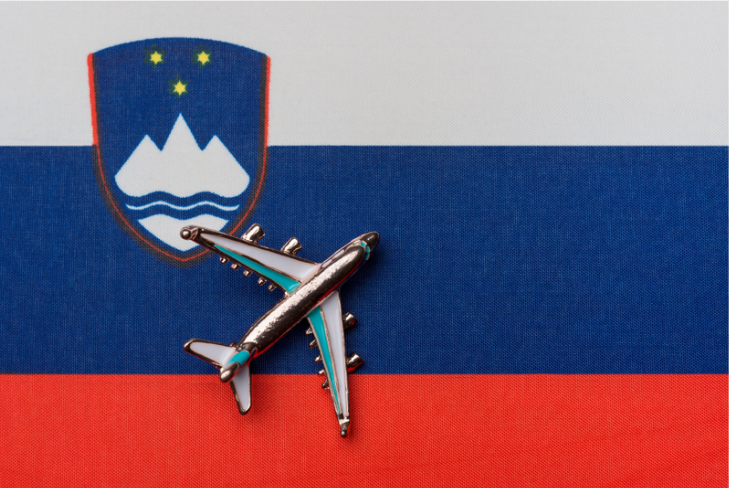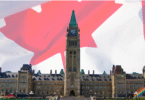Do you dream of visiting Europe, especially a beautiful country like Slovenia?
Slovenia is one of Europe’s hidden gems. It’s a small country full of lovely places and friendly people. You can go there to explore nature, attend a business meeting, or visit family or friends.
But before you go, there’s something important you must do and that is getting a Slovenian Schengen Visa. This visa is your ticket to not just Slovenia, but also to many other European countries that are part of the Schengen Area. It’s like a key that opens many doors.
In this article, I’ll explain everything you need to know about applying for a Slovenian Schengen Visa. By the end of this guide, you’ll feel more confident and ready to begin your visa journey.
What is a Slovenian Schengen Visa?
A Slovenian Schengen Visa is a short-stay visa that allows you to travel to Slovenia and other countries in the Schengen Area for up to 90 days within a 180-day period.
Now, what is the Schengen Area?
It’s a group of European countries that have removed border checks between them. This means if you have a visa for one Schengen country, like Slovenia, you can also visit other Schengen countries like France, Germany, Italy, Spain, and more without needing a new visa for each one.
But remember:
This visa is for short visits only. You can use it for tourism, business trips, family visits, or short studies but not for long-term work or staying permanently.
Important Things to Know:
- The visa is also called a Type C visa or a short-stay visa.
- It lets you stay in the Schengen zone for up to 90 days in any 180-day period.
- It does not allow you to work or live permanently in Slovenia or any Schengen country.
- You can travel between Schengen countries freely during your stay.
For example:
Let’s say you get a Slovenian Schengen Visa and enter Slovenia. After spending a few days there, you can travel to Austria, Italy, and Hungary (which are also Schengen countries) without needing another visa.
Who Needs a Slovenian Schengen Visa?
Not everyone needs a visa to visit Slovenia. It depends on the passport you hold and where you are from.
People Who Do Not Need a Visa:
If you are from a country that has a visa-free agreement with the Schengen Area, you can travel to Slovenia without a visa for up to 90 days in a 180-day period.
Some of these countries include:
- The United States
- The United Kingdom
- Canada
- Australia
- Japan
- South Korea
- New Zealand
- Most countries in South America (like Brazil, Argentina, Chile)
But remember: Even if you don’t need a visa, you must not stay longer than 90 days, and you can’t work while you’re there.
People Who Do Need a Visa:
If your country does not have a visa-free agreement with the Schengen Zone, then you must apply for a Slovenian Schengen Visa before you travel.
Some of these countries include:
- Bangladesh
- Egypt
- Philippines
- Nigeria
- India
- Pakistan
- Ghana
- Kenya
- Nepal
Even if you are just transiting (changing planes) in a Schengen country, you may still need a transit visa, depending on your nationality.
If you’re unsure whether your country needs a visa, you can check the European Union immigration page.
Types of Slovenian Schengen Visas
Before you apply for a Slovenian Schengen Visa, it’s important to know which type suits your purpose of travel. The type of visa you choose will depend on why you are going to Slovenia and how long you plan to stay.
1. Tourist Visa
This is the most popular type of Schengen visa. It’s for people who want to visit Slovenia for:
- Sightseeing
- Vacations
- Visiting friends or family
- Exploring historical places or nature spots
2. Business Visa
This type is for people who are traveling to Slovenia for:
- Business meetings
- Conferences
- Trade fairs
- Signing contracts
You must show proof of your business purpose, like an invitation letter from a Slovenian company.
-
Visitor Visa
If someone (like a friend or relative) is inviting you to Slovenia, this is the visa you need.
You will need:
- A letter of invitation from your host in Slovenia
- Proof of your relationship
- The host’s legal residence or ID
-
Transit Visa
This visa is for travelers who are just passing through Slovenia on the way to another country. You need this only if you are from a country that requires a visa even just to change planes at an airport in the Schengen Area.
-
Student/Training Visa (Short-Term)
If you want to take a short course, training, or attend a seminar in Slovenia for less than 90 days, you can apply for this visa.
You will need:
- Proof of enrollment in the course
- Duration and purpose of the training
- Accommodation details
-
Medical Visa
This is for people traveling to Slovenia for short-term medical treatment.
Documents needed include:
- A medical report from your home country
- A letter from a Slovenian hospital or doctor confirming your appointment and treatment plan
- Proof you can pay for your treatment
Important Reminder:
All of these are short-stay visas, usually called Type C Visas.
They let you stay for up to 90 days in a 180-day period.
If you want to stay longer (for example, to study full-time or work long-term), you need a national visa or residence permit, which is a completely different process.
Step-by-Step Guide to Apply for a Slovenian Schengen Visa
Applying for a Slovenian Schengen Visa may feel like a lot at first, but don’t worry. Let’s break it down step by step so it’s easy to follow.
Step 1: Know Where to Apply
First, find out where to submit your visa application. This can be:
- The Slovenian Embassy or Consulate in your country
- A visa application center (like VFS Global) that handles Slovenian visas
- If Slovenia has no embassy in your country, another Schengen country’s embassy (like Austria or Hungary) might handle it
Always check the official embassy website for details. It may differ from country to country.
Step 2: Choose the Right Visa Type
As we discussed earlier, pick the visa type based on your reason for travel:
- Tourist
- Business
- Visiting family/friends
- Transit
- Medical
- Student/training
The type of visa you choose affects what documents you will need.
Step 3: Book an Appointment
You must book an appointment online (or sometimes by email or phone) at the embassy or visa center.
Appointments can fill up fast—so book early, especially if you plan to travel during busy seasons (like summer or holidays).
Step 4: Fill Out the Schengen Visa Application Form
This is the official Schengen visa application form which you must complete honestly and clearly.
You can either:
- Fill it online and print it
- Or download it, fill it by hand, and sign it
Make sure:
- All information is correct
- You sign the form
- You attach one recent passport-sized photo (with a white background)
Step 5: Gather All Required Documents
This is very important. Missing documents can lead to a rejection.
Here’s what you will normally need:
Basic Required Documents:
- Completed visa application form
- Valid passport (not older than 10 years, with at least 2 empty pages, and valid for 3 months after your planned departure from Schengen)
- Passport-sized photo
- Travel itinerary (flight bookings—no need to buy ticket yet)
- Proof of accommodation (hotel bookings or invitation from host)
- Travel insurance (must cover up to €30,000 for medical emergencies in the Schengen Area)
- Proof of financial means (like bank statements from the last 3–6 months)
- Visa fee (usually €80 for adults; lower for children and students)
Additional Documents Based on Visa Type:
- Tourist visa: Proof of tourism (like hotel bookings, tour plans)
- Business visa: Invitation letter from a company in Slovenia
- Visitor visa: Invitation from host + copy of their ID or residence permit
- Student visa: Acceptance letter from institution + proof of payment
- Medical visa: Medical referral and confirmation from hospital in Slovenia
Step 6: Attend Your Visa Interview
On the appointment day:
- Go to the embassy or visa center
- Submit your documents
- Pay the visa fee (in cash or card—depending on location)
- Give biometric data (fingerprints and photo)
- Have a short interview
Interview Tip: Just be honest and confident. They might ask things like:
- Why are you going to Slovenia?
- Who will pay for your trip?
- Where will you stay?
- Do you plan to return?
Step 7: Wait for a Decision
Visa processing usually takes about 15 working days, but it can be longer if:
- Your case needs more checks
- You applied during busy periods
- You didn’t submit all required documents
Some embassies allow you to track your application online using a reference number.
Step 8: Collect Your Passport
Once your visa is ready:
- You’ll be notified by email, SMS, or phone
- Go to the embassy or visa center to collect your passport
- Or have it delivered, if the center offers courier service
What If Your Visa Is Denied?
You don’t need to panic if this happens. You can:
- Ask the embassy why it was refused
- Fix the issue and reapply
- Or appeal the decision (if you feel it was unfair)
Tips Before You Apply
Before you begin your Slovenian Schengen Visa application, keep these quick tips in mind:
- Start early: Don’t wait till the last minute, apply at least 3–4 weeks before your trip.
- Be organized: Keep all your documents in order and double-check everything.
- Never lie: Be honest about your travel plans. Remember that fake documents or answers can get you banned.
- Use official channels: Only apply through the official embassy site or trusted visa centers.
- Make copies: Always keep photocopies of your documents, passport, and visa—just in case.
What to Do After You Get Your Slovenian Schengen Visa
If you have successfully gotten your visa, some of the things you can do after that include:
- Make sure your name, dates, and visa type are correct. If something’s wrong, contact the embassy.
- You can now buy your plane tickets and confirm your hotel or stay plans.
- Bring copies of your visa, travel insurance, flight bookings, and any invitation letters when you travel.
- Don’t overstay your visa or do activities not allowed (like work if your visa is for tourism).
- Enjoy your trip, have fun and stay safe!
Frequently Asked Questions (FAQs)
-
How much does a Slovenian Schengen visa cost?
The standard fee is €80 for adults. Children, students, and some special cases pay less or may be exempt.
-
How long does the visa process take?
It usually takes 15 calendar days but can take up to 30 or more days during busy times or for extra checks.
-
When should I apply for the visa?
Apply at least 15 days before your trip, but no earlier than 6 months before your travel date.
-
Do I need travel insurance?
Yes, travel insurance covering at least €30,000 for medical emergencies in the Schengen Area is mandatory.
-
Can I enter other Schengen countries with this visa?
Yes, but you should spend most of your trip in Slovenia or enter Slovenia first.
-
Do I need to buy flight tickets before applying?
No. You only need to show flight reservations, not paid tickets.
-
What if my visa is rejected?
You can ask for reasons, fix issues, and reapply or appeal the decision.
-
How long can I stay on a Slovenian Schengen visa?
Up to 90 days within a 180-day period.
Conclusion
Applying for a Slovenian Schengen Visa may seem tricky at first, but with the right steps, it’s completely doable. Remember to prepare your documents carefully, apply early, and follow the rules. Once you have your visa, double-check everything, plan your trip, and enjoy the beautiful country of Slovenia!
If you take your time and stay organized, your visa journey will be smooth.
Safe travels and have a wonderful experience in Slovenia!






